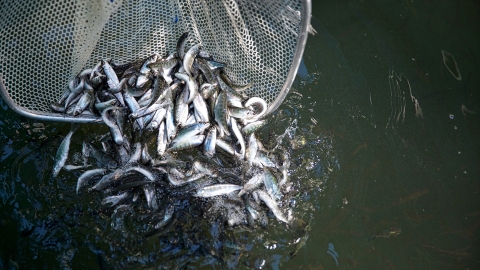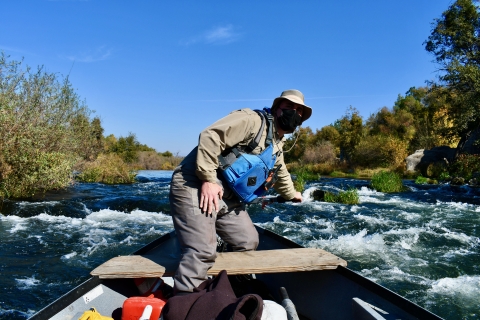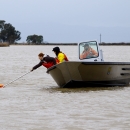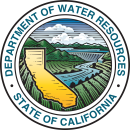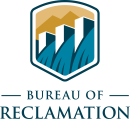San Joaquin River Restoration Program
The San Joaquin River Restoration Program is a multi-agency effort to restore self-sustaining fish populations to the San Joaquin River, with a current focus on threatened spring-run Chinook salmon. The restoration area stretches for 150 miles of the San Joaquin River, from the base of Friant Dam to the confluence with the Merced River.
The Service and our partners in implementing the program — the Bureau of Reclamation, National Marine Fisheries Service, California Department of Fish and Wildlife and California Department of Water Resources — have reintroduced salmon to the San Joaquin River and have increased water flows from Friant Dam into the river for restoration.
We are also working to remove obstacles to the river’s connectivity, so fish can reach historical spawning areas below Friant Dam. Several channel- and structural-improvement projects are underway to address dams and other obstacles to fish passage fish passage
Fish passage is the ability of fish or other aquatic species to move freely throughout their life to find food, reproduce, and complete their natural migration cycles. Millions of barriers to fish passage across the country are fragmenting habitat and leading to species declines. The U.S. Fish and Wildlife Service's National Fish Passage Program is working to reconnect watersheds to benefit both wildlife and people.
Learn more about fish passage .
Returning to historic habitat
Chinook salmon are naturally born in freshwater habitats then travel to the ocean, where they live for years before returning to their birthplace to spawn before dying. Spring-run had once thrived in the San Joaquin River, but they disappeared from the restoration area for over 60 years after dams diverted water for agriculture, drying up their habitat.
Restoration flows from Friant Dam into the river began in 2009, enabling the restoration program to begin annual releases of hatchery-raised juvenile Chinook salmon in 2011. The amount of water available for restoration flows depends on the amount of runoff in the watershed above Friant Dam. The program's water-management goal is to reduce or avert adverse water-supply impacts to Friant Division long-term contractors resulting from flows.
Results have shown that juvenile salmon released into the river have successfully journeyed from the restoration area to the ocean and returned to the river to spawn years later.
Production and management
To restore spring-run Chinook Salmon to the restoration area, the program’s reintroduction plan relies on a conservation broodstock broodstock
The reproductively mature adults in a population that breed (or spawn) and produce more individuals (offspring or progeny).
Learn more about broodstock program to establish a self-sustaining population of spring-run Chinook salmon using genetic management and conservation hatchery techniques. Spring-run broodstock have been collected annually for the program from the California Department of Fish and Wildlife's Feather River Fish Hatchery since 2012, with the exception of 2017, when there were no collections.
The Lodi Fish and Wildlife Office annually supports spawning activities at the Feather River Fish Hatchery, which typically last one to three weeks. The eggs collected during this process contribute to the program meeting its salmon production goal for broodstock development. It is estimated that more than 200,000 juvenile salmon are released into the river each year.
The Lodi office also conducts a number of monitoring projects to inform management and adaptively manage the fishery and river conditions. These projects include redd, or nest, monitoring; carcass-recovery surveys; mobile acoustic telemetry monitoring; and measurement of fry emergence success.
Learn more
Field activities may vary annually. For information on planned research and monitoring activities, view the program's field advisory notifications. For data inquiries and information requests, please email brandon_honig@fws.gov or tamara_ward@fws.gov or call 916-930-2657.
For more on the program, visit the San Joaquin River Restoration Program website.

